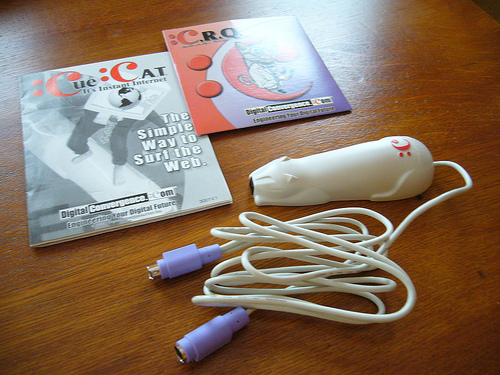Technologists have long talked about the “singularity,” the day when the machines can outthink us and surpass human intelligence. That day is a long way off. But we have reached another kind of singularity. In this event, our expectation is that the information we seek will be digital and easily available on demand. In the first Internet, our digital presence was a supplement to the dominant analog model. In the second iteration, a social layer moved many of our conversations online, alongside increasingly social content from mainstream publishers (think: Amazon book reviews, blog comments and “social” stores like eBay).
In the digital singularity (I dare not call it Internet 3.0) old-fashioned, grubby, in-real-life – ANALOG – assets are clamoring to join the fracas. And so far, it’s been a bumpy ride. Leading the way are web-friendly bar codes that push us to web sites when we take a picture of them with a mobile application. These have been deployed well (such as on product displays at stores like Best Buy; seriously, who can keep track of 40 different TV models without some help?) and poorly (almost every newspaper or magazine has an ad with a bar code, pushing you to some crummy commerical on a web page).
These bar codes are easy to create, print and share, but chances are they haven’t yet materially affected your daily life. If you don’t use a smart phone, they are out of your grasp. If you do, you must load the app before you point your device at the code. Sometimes it doesn’t work. It’s a reasonable technological approach, but still too tweako to become useful to the masses. We have yet to see the killer app that will make these codes part of our daily lives.
But if you would like to learn more about moving the analog world online, I highly recommend this post by Joshua Holland at Edelman Digital, which includes this slide deck (95 slides) from PSFK:
Further down the line, augmented reality holds more promise, though the technological base is pretty complicated for widespread adoption today. Layar, an augmented reality app for the iPhone and Android platforms, uses several layers of technology to deliver a locatin-based experience with a web overlay. It begins with the camera in your mobile device, which “looks” at the landscape in front of you. Next, the GPS in your device kicks in, associating the visual with coordinates in a Google map. Next, a “screen” of software is loaded, indicating points of interest on the map, floating on top of the image. Then some content flows onto your screen when you touch the points of interest. You might be led to a phone number, which you can dial with one touch, or some information about store hours, or the location of the nearest accessible entrance.
While it’s easy to use Layar, the different “layers” aren’t easy to find or load onto your mobile device, and there’s no critical mass of applications that will drive use of the software. Still, for niche use, this is promising – and powerful.
Today, the crush demand for digital content must be measured against the many hurdles that these new technologies face. We mustn’t become technological determinists. If we build it, there’s actually little chance that people will come. Failure is the norm. After all, we’ve done this before. During the first Internet boom, one hot technology was the CueCat: yes, a bar code reader to guide you to a web page. Of course, it was a colossal failure; Gizmodo voted it one of the worst inventions of the decade (2000s).
Wrote Brian Barrett:
“If you subscribed to a magazine in 2000, there was a decent chance you were sent a CueCat, and an even better chance you never used it. The CueCat was a barcode scanner that you plugged into your computer. The idea was that users would scan ads in magazines and thus be shepherded magically to the advertiser’s website. If it sounds like a needlessly cumbersome way to use the Internet, that’s because it is! Fortunately, the CueCat was put down for good in 2001.”
As you go through your day, watch for evidence of the “analog bridge”: technology that brings the analog world online in a meaningful way. The CueCat was ridiculously ahead of its time. After all, back then, going online meant booting a computer, firing up a modem and logging on to AOL. Today the barriers are much lower. And, with the digital singularity, there’s a pull – an expectation – that the conversation will be online.
What will be the killer app? Who is effectively using bar codes or augmented reality today?


Leave a Reply